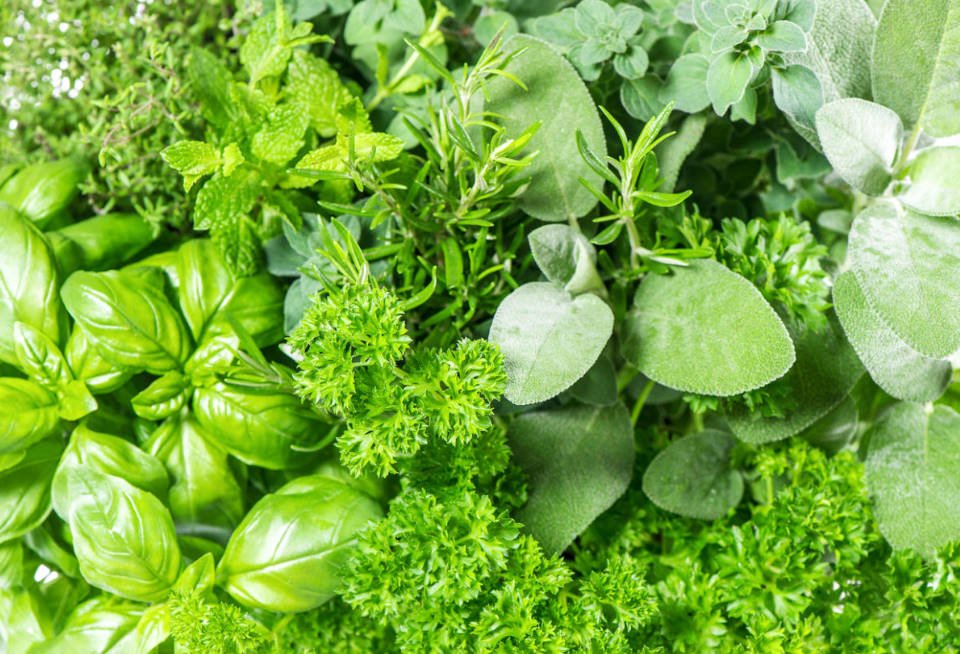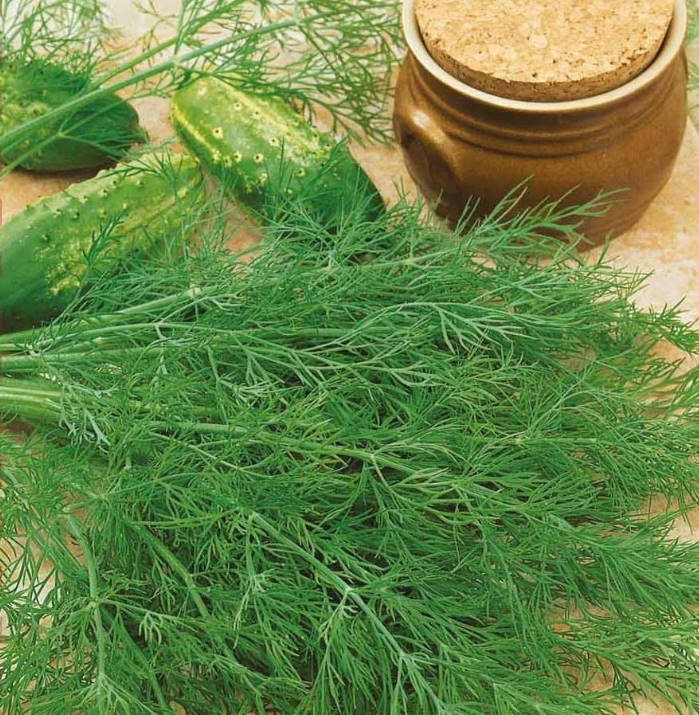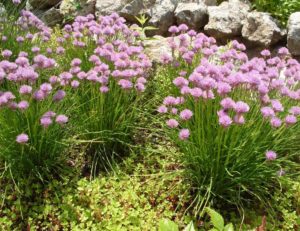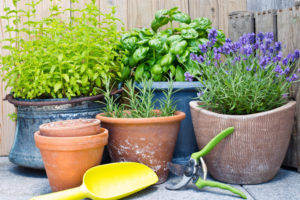
Dill
Dill is a thermophilic, but at the same time cold-resistant crop. Its seeds begin to germinate at a temperature of about 3 °C (37.4°F), growth begins at +5…+8 °C (41-46. 4°F), but the optimal temperature for growth is +18…+20 °C(64.4-68°F). Remember that the culture makes high demands on light and humidity.
Good precursors for dill are those vegetables that are made from organic and mineral fertilizers (cabbage, especially early cabbage and cauliflower, cucumbers, peppers, early potatoes), as well as tomatoes, table vegetables and root vegetables. Since autumn, the site is cleared of plant residues, autumn tillage is carried out to a depth of 24-26 cm (9.4-10.2 inches).

Fennel “Tenderness”
When growing dill, it is better to apply all fertilizers when preparing the soil, so as not to carry out additional fertilizing of the crop during the growing season, since early vegetable products can actively accumulate nitrates.
Spring sowing of dill in the open ground is carried out as early as possible – at the first opportunity of field work. In order to constantly have fresh young greens, sowing is carried out several times per season, from early spring to early August with an interval of 15-20 days. In the Central region, when spring crops of dill are planted, the yield of green mass is higher than in summer. Suitable and winter sowing (on frozen soil at the end of November), the seeds are sprinkled with peat for 2-3 cm (0.8-1.2 inches) and increase the seeding rate by 10-15%.
Fennel seeds, like many celery seeds, germinate slowly. Under optimal conditions – for 14-16 days. Therefore, to get earlier shoots and, accordingly, early greens, you can pre-prepare the seeds. They are placed in a gauze or cloth bag so that it is 6-8 times the volume of the seeds. Then they are washed with running water at a temperature of + 45…+50 °C (113-122°F) (hot tap water) for one minute and, having distributed a thin layer of 2-3 cm (0.8-1.2 inches), left to germinate for two to three days, periodically (2-3 times a day) washing in warm water.
Seeds treated in this way and sown in moist soil give early friendly shoots on the second or third day. You can soak the seeds for 2 days in water, changing the water 3 times a day, then they are dried to a loose state.

Fennel “Fireworks”
All green crops, including dill, are not allowed to use any chemical pesticides. To prevent the appearance of pests and diseases, use only agrotechnical methods: timely destruction of weeds and post-harvest residues, compliance with crop rotation, sowing only healthy seeds. Pre-sowing seed heating also helps well.
Dill is sometimes damaged by various types of aphids, carrot moths, and umbrella bugs. Measures to control these pests: spatial isolation of dill crops from willow plantations, weed removal, abundant watering, destruction of plant residues.
The choice of varieties is quite wide. To date, there are more than 80 varieties of dill, which differ in early maturation, plant density, and economic purpose.
- Early varieties of dill are good for early greens and umbrellas for spices. They quickly turn to stemming and flowering.
- Medium varieties they are characterized by versatility of use: they form a high yield of green mass and have time to form a flower umbrella, are widely used as spices. The varieties of this type include “Hercules”.
- Medium and late varieties during the flowering period, it has good foliage. One of the best varieties of the middle class is the variety “Gladiator”.
Varieties of shrub dillare characterized by short lower internodes, in which the green leaves persist for a long time, and the lateral shoots develop from the axils of these leaves, as a result of which the leaves of the plant are significantly enlarged. These varieties are very productive. Such varieties include “Tenderness”, “Fireworks”.
Properly selected varieties, sown several times during the growing season (with an interval of 15-20 days), you can ensure a continuous conveyor supply of vitamin greens almost all year round.
Thyme
Thyme is a perennial plant grown as a spicy-aromatic crop. Due to the high content of essential oil in the leaves and young shoots, which has a strong antiseptic property, thyme has a strong spicy aroma and a bitter, burning taste. Plants contain flavonoids, tannins, mineral salts, and organic acids.
Fresh and dry thyme leaves are used as a seasoning for various dishes, in the confectionery industry, in the preparation of marinades, sauces, marmalades, used for flavoring liqueurs and vinegar.
Thyme is an unpretentious crop that requires moderate conditions for good growth and development. Relatively cold-resistant, drought-resistant. Plants are light-loving, do not tolerate shading. The soil prefers medium-fertile, dry stony, with a neutral reaction. On moist clay soils, it grows poorly and loses its flavor.
In the middle zone, thyme is grown as an annual crop by seedlings or direct sowing in the soil at the earliest possible time. Seedlings are sown in March-April in light neutral soil. Since the thyme seeds are very small, sowing is carried out to a depth of no more than 0.5 cm (0.2 inches). Shoots appear in 15-20 days, and at this time it is very important to keep the site clean of weeds. Too thickened crops must be thinned in 1-2 steps, leaving 10-15 cm (3.9-5.9 inches) between the plants.
Plants are virtually immune to diseases and pests, which further simplifies their cultivation. In areas with mild winters, thyme can be grown as a perennial crop. The most fragrant and abundant greens are obtained when sowing the “Medok” variety.




Leave a Reply